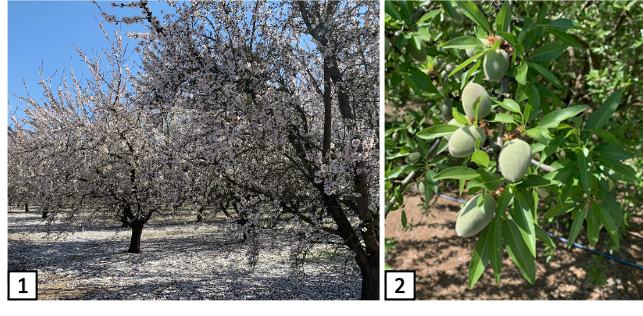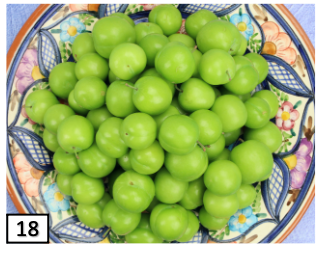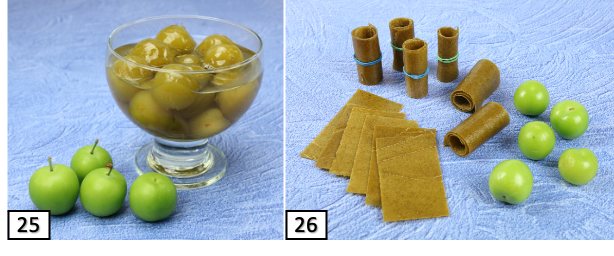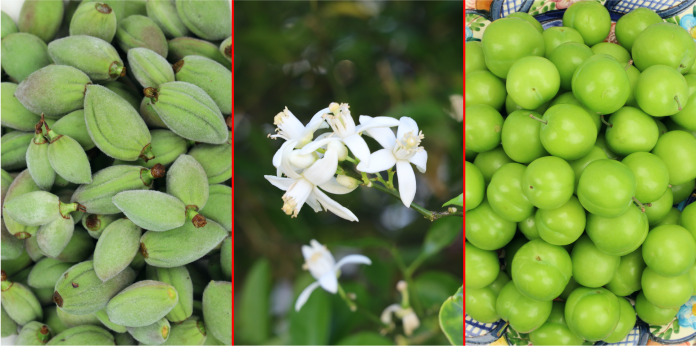[The views expressed in this blog post are the author’s own.]
The underlying culinary ideas that in today’s modern world are referred to as root-to-bloom, bud-to-root, nose-to-tail, or sustainable-cooking have been present in Persian cookery for hundreds of years. Over the centuries, the geographical, climatic, strong seasonality, and resource scarcity challenges naturally present in Greater Iran – the regions of West Asia, Central Asia, South Asia, and Transcaucasia where Iranian culture has had significant influence and Iranian languages were spoken – have had a strong influence on the development of clever culinary habits and frugal skills of home cooks in Persianate society. Persian cookery is full of examples where all parts of a given plant throughout its annual lifecycles (including blossoms and unripe fruits) are used to create a wide range of Persian food items.
From time-to-time, such practices reach seasonal climaxes where Persian home cooks need to plan to take advantage of multiple rare and short-lived seasonal elements of fruit trees. A prime example is mid-spring when within the span of just about four weeks, three prized fresh ingredients become available for a very short period.
Often first is the availability of fresh unripe green almonds [Persian: چاغاله بادام, Romanized: chāghāleh-bādām], followed by orange blossoms [Persian: شکوفه بهار نارنج, Romanized: shokoofeh-é-bahār-nārenj] and finally, unripe green plums [Persian: گوجه سبز, Romanized: Gojeh-Sabz].
Although such prized spring ingredients are readily available in many regions of Iran, it is a major challenge for lovers of Persian cuisine living outside of Iran to get their hands on these ingredients. Living in northern California, I am blessed to have access to all of these – from locally grown fruit trees, to visiting specialty middle eastern grocers within a couple of hours drive, to specialty mail order sources in southern California who can ship scarce perishable ingredients quickly. So, I have been busy in my home kitchen making a slew of authentic Persian food items based on these beloved spring ingredients.
Unripe Green Almonds
Almond trees are one of the earliest, if not the first, fruit trees that bloom in Spring (Figure 1). After a couple of weeks of blooming, the almond blossoms evolve into young green unripe almonds (Figure 2).

Unripe green almonds are anywhere from pale green to dark green. They are oval shaped with the blossom end being pointier than the end that is attached to the tree – somewhat like a half flatten rugby ball (Figures 3 and 4). For culinary purposes, they are best when between 2 to 3 centimeters (approximately 0.75 to 1.5 inches) long and about 1 centimeter (about 0.5 inches) thick. Their exterior hull is fuzzy, feels soft, but crunchy when bitten into. The exterior fuzz may feel familiar because, botanically speaking, almonds are not nuts but instead are seeds of stone fruits and related to such fruit as peaches and apricots. The interior part is soft, very moist, and somewhat gelatinous (Figure 4). When left on the tree, they lose their fuzz, the outer hull turns brown and hardens, and the inner kernel develops a thin brown skill covering the hardened white almond nut.

In the Persian culinary landscape, fresh green unripe almonds are used in many food items ranging from snacks to main dishes to pickles as detailed below:
- Raw as a Snack –In Iran, unripe green almonds are sold as a street food by vendors and eaten raw as an anticipated seasonal snack. They are tart, crisp, and have a slight sour taste. Many enjoy dipping them in salt (Figure 5)
- Green Almond Borāni – Borānis (Persian: بورانی, Romanized: Borāni) are a popular class of cold Persian yogurt-centered dishes that are most often served as an appetizer or a side dish. Green almond borāni is a refreshing and nutty mixture of blanched chopped green almonds, sautéed onions, yogurt, and a simple set of spices (Figure 6).
- Green Almond Kookoo – Kookoos (Persian: کوکو, Romanized: Kookoo) are an important class of Persian egg-centered dishes that are most often served as an appetizer or a side dish – either hot or cold. Persian kookoos are not like quiches (there is no crust), are not frittatas (the ingredients are cut or chopped much finer), and are not like souffles (they do not collapse). Green almond Kookoo, whose main ingredients are blanched chopped green almonds and eggs, is made by gently pan frying a thick batter in its entirety in a frying pan (Figure 7).

- Green Almond Āsh – Āshes (Persian: آش, Romanized: Āsh) are a famous class of Persian thick soup-like dishes that are hearty enough to be served as a main dish. Primary ingredients of a typical green almond āsh are chopped fresh green almonds, rice, bulgur, lentil, white beans, dill, and garlic chives (Figure 8). It can be made with or without meat. The meat version often includes simple small beef or lamb meatballs.
- Green Almond Khoresh – Persian Koreshes (Persian: خورش, Romanized: Khoresh) are stew-like dishes and are served along with Persian steamed rice. The main ingredients of a typical green almond khoresh are halved or quartered green almonds, beef or lamb stewing meat, onion, fresh mint, and fresh parsley (Figure 9). A vegetarian version of this dish can easy be prepared by substituting meat with such ingredients as mushrooms, tofu, or plant-based meat substitutes.
- Green Almond Pickles – Green almond pickles are one of the simplest Persian pickles (Persian: ترشی, Romanized: Torshi) to make. The primary ingredients are whole or halved green almonds and a vinegar-based pickling liquid. Once processed for long-term room-temperature storage in vacuum sealed glass jars (Figure 10), they will be ready in about three months and remain in their optimum texture and flavor for at least one year. Given that the green almonds do not freeze well, pickled green almonds are a perfect way of enjoying green almonds all year around.

- Going Above and Beyond Persian Traditional Dishes – Fresh unripe green almonds are versatile enough to be used for other than traditional Persian dishes. The author has successfully experimented with such dishes as:
- Green Almond Paste – Made by finely straining puréed boiled green almonds. It has a surprisingly high sourness but pleasant taste. It can be used in the same way that, for example, pomegranate paste is used to flavor dishes.
- Green Almond Butter – Made by blending sugar into a batch of green almond paste (Figure 11). It has a pleasant sweet-sour taste and is perfect for spreading over a slice of warm toast. Although fresh unripe green almonds do not freeze well, green almond paste and butter do. Freeze in ice cube trays. Once frozen, put frozen cubes in a sealed freezer storage bag.

-
- Green Almond Ice Cream – Use your favorite fresh berry ice cream recipe with high cream content, replacing the typical berry purée with green almond paste (mentioned above) adjusting the sugar level to your liking.
- Green Almond Salad – Very thinly sliced fresh unripe green almonds – slices of no more than 1 centimeter thick – are a perfect ingredient for a unique spring salad along with thin slices of fennel bulb, and feta cheese sprinkled with ground black pepper, flakes of dried thyme, and a few drops of virgin olive oil.
- Sautéed Green Almonds – A suggestion by the author’s wife, is made by sautéing blanched whole green almonds in olive oil until well browned and crispy. After sprinkling some coarse salt flakes, they make an excellent vegetable side dish.
Orange Blossoms
The next short-lived spring ingredient, orange blossoms (Figure 12) – in particular from the variety commonly known as Seville orange, bitter orange, sour orange, bigarade orange, or marmalade orange (Citrus × aurantium species) (Persian: نارنج, Romanized: nārenj) – are a highly praised ingredient in Persian culinary landscape, and are used primarily for two purposes: orange blossom jam (Persian: مربای بهار نارنج, Romanized: morabā-é-bahār-nārenj) and orange blossom distillate (Persian: عرق بهار نارنج, Romanized: aragh-é-bahār-nārenj).
Harvesting and cleaning orange blossoms is a delicate and time-consuming task. Only the white petals are used. If one has access to blossoming orange trees (e.g., have a few in your own yard, or have a friend with a few in their yard, or a friendly orchard owner), and if one has the patience, the best strategy for harvesting is to collect fully opened blossoms that drop to the ground once every 24 hours or so. If one does not want to disturb the hungry bees, spread some fabric on the ground underneath the tree and collect the fallen blossoms and petals daily at dusk after the bees have finished for the day (Figure 13). Clean as soon as you can after you have harvested them, separating the white petals from the stamens and pistils (Figure 14). Orange blossoms are very aromatic – the moment you bring them into your house, the house will start smell heavenly.

- Orange Blossom Jam – A specialty from the coastal regions of Caspian Sea – central north of Iran – where citrus trees are grown. The author recalls childhood summer vacation memories of stopping at farmer’s roadside stands along the primary road hugging the southern edge of Caspian Sea, to purchase jars of the jam. The only ingredients in the jam are cleaned fresh orange blossom petals (Figure 15), sugar, and a bit of lemon juice. Like most other Persian-style jams, orange blossom jam has a viscosity that is like honey at room temperature where semi-translucent cooked petals swim in a thick aromatic sugar syrup (Figure 16). It has a pleasant orange-like aroma, has a soft sweet flavor, and the cooked petals have a unique and pleasant texture.
- Orange Blossom Distillate and Sharbat – One needs a lot of orange blossoms and a distill to make orange blossom distillate – not something feasible for a typical home cook in a typical modern western home kitchen. Bottles of it, however, are available through specialty middle eastern markets and online Persian grocery stores. Sometimes is it used as a flavoring enhancement agent in Persian sweets. The other primary use is to make Persian Orange Sharbat. Sharbats (Persian: شربت, Romanized: Sharbat) are a class of refreshing sweet cold beverages which are mixture of various fruit syrups and/or distillates, simple syrup, and water. To make Orange blossom Sharbat, mix diluted simple syrup with orange blossom distillate and serve in a glass with ice (Figure 17). It is a refreshing and aromatic summer beverage.

Unripe Green Plums
Fresh unripe green plums are yet another prized Persian spring specialty available for only a few weeks in mid-spring (Figure 18). For culinary purposes, the best variety are the Greengage plums (Prunus domestica ssp. Italica). The greengages are a group of cultivars of the common European plum. The first true greengage came from a green-fruited wild plum (Persian: گوجه سبز, Romanized: gojeh-sabz) which originated in Iran. A wide variety of ripened plums (fresh or dehydrated) are used in an assortment of Persian food items and consumed throughout the year. The unripe green plums, however, have a unique place in Persian cookery.

They are tart, crunchy, and juicy. In Iran, in addition to availability in green grocers, they are sold by street vendors. In the Persian culinary landscape, similar to fresh unripe green almonds, fresh green unripe green plums are used for many unique food items ranging from snacks to main dishes to pickles to desserts as described below:
- Raw as a Snack – One of the most popular (if not the most popular) ways to consume fresh unripe green plums is to eat them raw, dipped in salt, as a snack (Figure 19). Its tart flavor, combined with its super crunchiness and juiciness, causes kids and adults alike to salivate for them. Stories of stomach aches and “burned” tongues abound after too many have been eaten.
- Unripe Green Plum Soup – Unripe green plum soup (Persian: خالو آبه or سوپ گوجه سبز, Romanized: Soup-é-Gojeh-Sabz or Khaloo-Ābeh) is a vegetarian specialty of Iran’s northern province of Gilan located along the Caspian Sea. People of Gilan are very fond of sour ingredients and dishes. For this soup, the sour plums are boiled in a small amount of water until well cooked and pulp and skin of the plums fall off the pits. Pits are removed and the tart pulp is used in the soup. In addition to unripe green plums, other primary ingredients of this regional soup are rice flour, chopped fresh herbs (mint, coriander, and a couple of very unique regional herbs), garlic, onion, a bit of sugar, and eggs. Often the eggs are beaten slightly and added to the soup right before it is served resulting in strands of delicate cooked eggs floating around the soup (Figure 20).
- Unripe Green Plum Āsh – As mentioned earlier in the discussion of unripe green almonds, āshes are a famous class of Persian thick soup-like dishes that are hearty enough to be served as a main dish. The unripe green plum version of āsh (Persian: آش گوجه سبز, Romanized: Ash-é-Gojeh-Sabz) can be made either with the plums cooked while in the āsh or pre-boiled, pitted, and the tart pulp added to the āsh. Other typical primary ingredients of this dish include rice, yellow split pea, kidney beans, and a mixture of chopped fresh herbs (Figure 21). A non-vegetarian version can easily be made by adding small beef or lamb sautéed meatballs.

- Unripe Green Plum Khoresh – This is another Persian stew-like dish that that is typically made with chunks of beef or lamb meat, and like other Persian khoreshes, is eaten along with Persian-style steamed rice. Unripe green plum khoresh (Persian: خورش گوجه سبز, Romanized: Khoresh-é-Gojeh-Sabz) is a delicate dish that requires a relatively long cooking time over a very low heat. The green plums are added during the final 30 minutes of the overall cooking process, after the meat is well braised (Figure 22). Here, green plums remain intact providing an explosion of tart flavors in the mouth every time one is bitten into. A vegetarian version can easy be prepared by substituting meat with such ingredients as mushrooms, tofu, or plant-based meat substitutes.
- Unripe Green Plum Pickles – Pickling unripe green plums (Persian: ترشی گوجه سبز, Romanized: Torshi-é-Gojeh-Sabz) is as easy as the pickling unripe green almonds, described earlier in this article. Unripe green plums are pickled raw but are pierced with toothpicks in a few places to facilitate the pickling process. Once processed for long-term room-temperature storage in vacuum sealed glass jars (Figure 23), they will be ready in about three months and retain their optimum texture and flavor for at least one year. Given that the green plums do not freeze well, pickled green plums are perfect way of enjoying green sour plums all year around.
- Unripe Green Plum Jam – The only challenging part of making this jam (Persian: مربای گوجه سبز, Romanized: Romabā-é-Gojeh-Sabz) is removing of the pits from the fresh uncooked plums without losing too much of the meat of the fruit. An efficient approach is to half-way crush individual plums with the side of a chef’s knife (blade being held parallel to the cutting board) resulting in the pits – most often – popping out. After removing the pits, water and sugar is added, and the jam is cooked until thickened (Figure 24). This jam has a very pronounced but pleasant tartness.

- Unripe Green Plum Compote – Compotes (Persian: کمپوت, Romanized: Kompoot) are whole, halved, or sliced fruit cooked gently in simple light sugar syrup. Slow cooking is important for the fruit to maintain its shape (Figure 25). Compotes are popular fruit desserts in Iran and green plums are among the finest dessert plums for making compote.
- Unripe Green Plum Rollups – Fruit rollups (Persian: لواشک, Romanized: Lavāshak) are a popular class of snacks among Iranians. Ones made from green (Figure 26), yellow, or red plums, apricots, pomegranate, barberries, are sour cherries are most popular.

Acknowledgements
The author acknowledges the following individuals and entities for their assistance in providing information about and/or facilitating access to source these seasonal ingredients: Professor Helene Dillard, dean of the College of Agriculture and Environmental Sciences, University of California, Davis, Professor Suad Joseph, also at UC Davis, Modesto Convention & Visitors Bureau, Babylon Market in Modesto CA, Kings Market in Sacramento CA, and Kalamala online Persian grocery store.
Credits and Copyright
All photographs were taken by the author who owns the corresponding copyrights. All dishes depicted in this article were prepared by the author in a typical modern western home kitchen.


